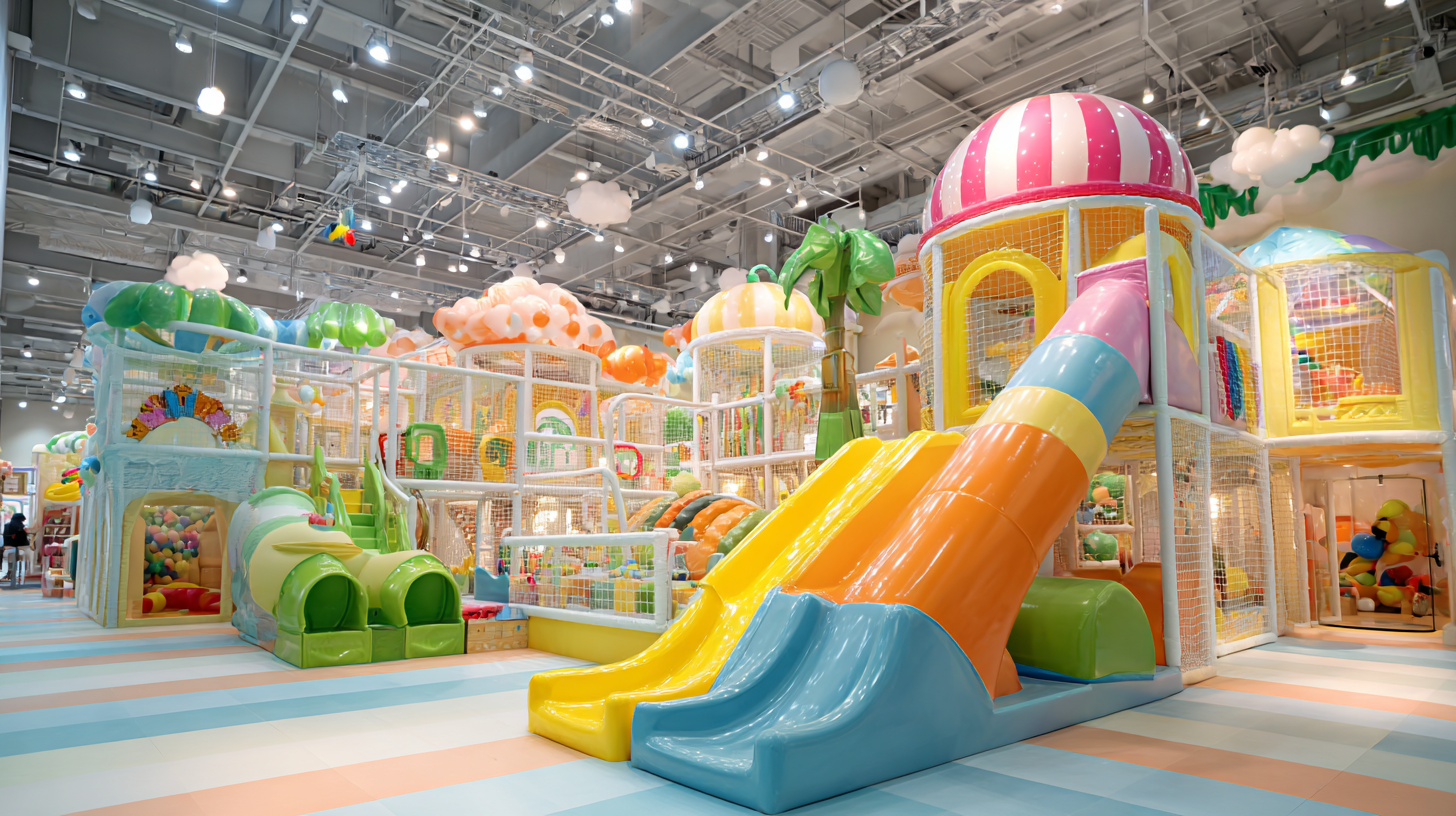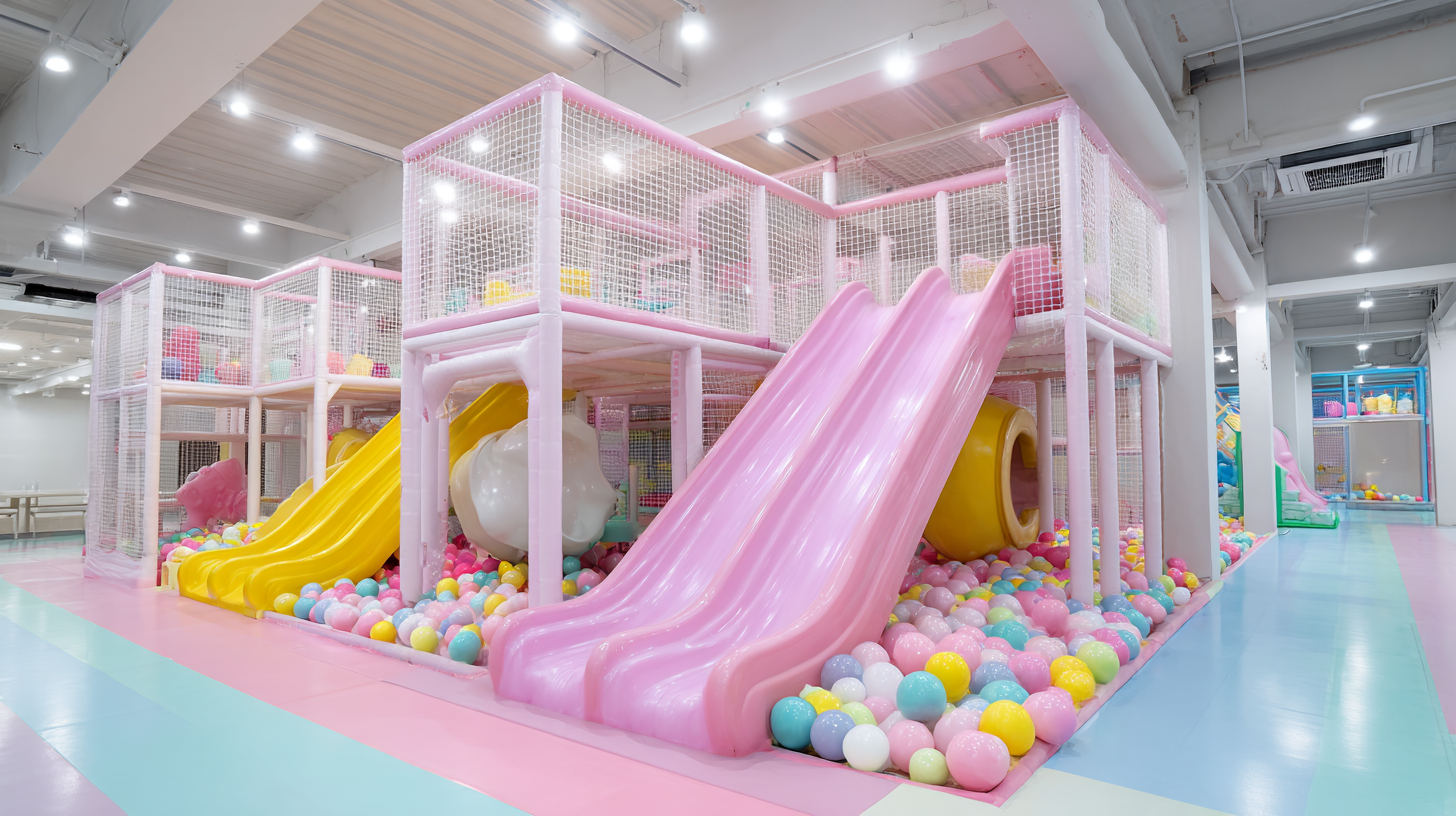
Inquiry
Form loading...
The global indoor soft play equipment market is witnessing unprecedented growth, driven by the increasing demand for safe and engaging recreational options for children. According to a recent report by Grand View Research, the market is projected to reach USD 2.94 billion by 2025, growing at a CAGR of 7.6%. This surge is largely attributed to the rising number of indoor play centers and the growing emphasis on children's physical activity in a controlled environment. As families seek quality entertainment options, the need for durable, innovative, and compliant indoor soft play equipment has never been more critical. In this context, "Made in China" has emerged as a hallmark of quality and reliability, positioning Chinese manufacturers as key global partners for sourcing top-tier play equipment. Whether you are an entrepreneur looking to establish a play center or an existing business aiming to upgrade facilities, understanding the landscape of indoor soft play equipment sourcing is essential for success in this booming market.

Indoor soft play equipment plays a crucial role in child development by providing a safe and stimulating environment for children to explore, learn, and socialize. These play areas encourage physical activity, enhance gross motor skills, and improve balance and coordination. As children climb, jump, and navigate through various structures, they build confidence and learn to take risks in a controlled setting, which is essential for their overall growth.
When selecting indoor soft play equipment, consider incorporating elements that support cognitive development. For example, choose equipment that encourages imaginative play, such as soft blocks or interactive panels. This type of play fosters creativity and problem-solving skills. Additionally, incorporating various textures and colors can stimulate sensory exploration, which is vital for young children's cognitive processes.
Tip: Regularly rotate the equipment or rearrange the play environment to keep children engaged and challenged. This not only maintains their interest but also helps in developing adaptability and flexibility in their play skills. Always ensure the safety standards are met, and equipment is age-appropriate to maximize benefits and minimize risks.
| Type of Equipment | Age Range | Developmental Benefits | Material | Safety Standards |
|---|---|---|---|---|
| Soft Climbing Structures | 1-5 years | Gross motor skills, coordination | Foam, fabric | ASTM, EN1176 |
| Ball Pits | 6 months - 4 years | Sensory development, social skills | Plastic balls, mesh | CPSC, ISO |
| Indoor Slides | 2-6 years | Physical fitness, risk assessment | Plastic, reinforced edges | TUV, CE |
| Interactive Play Panels | 0-3 years | Cognitive skills, problem-solving | Wood, non-toxic paint | ASTM F1487 |
| Soft Play Blocks | 1-6 years | Creativity, fine motor skills | Foam, vinyl | EN71 |
China has emerged as a powerhouse in the indoor soft play equipment market, leading global production and innovation. According to a recent industry report, the global indoor play equipment market is projected to grow significantly, reaching USD 2.4 billion by 2026, with Asia-Pacific, particularly China, holding the largest share. This growth can be attributed to increasing urbanization, the rise of indoor amusement centers, and a heightened emphasis on safe, engaging play environments for children.

When sourcing from top Chinese factories, it’s essential to prioritize quality and safety standards. Look for manufacturers that comply with international safety certifications, such as ASTM or EN standards, which ensure that products are child-friendly and durable. Engaging directly with factories can also yield better pricing and customization options, enhancing the uniqueness of your play areas.
Tip: Always request samples and conduct rigorous quality checks before making large orders. Building relationships with factory representatives can lead to better service and insights into the latest trends in play equipment design and functionality.
Moreover, the versatility in design offered by Chinese manufacturers, from themed indoor playgrounds to modular soft play systems, allows for diverse play experiences that cater to different age groups and preferences. It's crucial to choose equipment that not only entertains but also promotes physical activity and social interaction among children.
Tip: Keep an eye on emerging trends such as eco-friendly materials and technology integration, which are becoming increasingly popular in the industry, enhancing both play value and sustainability.
When sourcing indoor soft play equipment, several key features should be carefully considered to ensure a safe and enjoyable environment for children. First and foremost, safety standards are paramount. Look for equipment that meets international safety regulations, such as ASTM or EN standards. This includes using non-toxic materials, ensuring rounded edges, and providing adequate cushioning. Furthermore, the design should limit the risk of entrapment or falls, allowing children to explore without the worry of injury.
Another critical aspect is the versatility and adaptability of the equipment. Soft play areas should be designed to accommodate various age groups and developmental stages. Choose modular equipment that can be easily reconfigured to keep the play space engaging and fresh. Additionally, consider the ease of maintenance. High-quality materials will not only withstand the rigors of daily use but also make cleaning and upkeep straightforward, ensuring a hygienic play environment. By prioritizing these features, you can select the best indoor soft play equipment that caters to both safety and fun.
When sourcing indoor soft play equipment, ensuring quality control is paramount for safety. According to the International Playground Equipment Manufacturers Association (IPEMA), 90% of playground injuries are preventable through proper equipment design and regular safety audits. This highlights the critical need for sourcing from manufacturers who prioritize safety in their production processes. Rigorous testing and adherence to industry standards not only protect children but also build trust with parents and facilities.
Tip: Always request certifications and safety testing results from manufacturers. Look for compliance with international safety standards such as ASTM and EN1176, which signify that the equipment has been appropriately tested for durability and safety.
Investing in high-quality soft play equipment means selecting products made of non-toxic, durable materials with well-designed safety features. The market for indoor play equipment is expected to reach $1.5 billion by 2025, demonstrating the growing demand for safe and engaging play environments. Choosing manufacturers with a robust quality assurance process can mitigate risks and enhance the play experience for children.
Tip: Conduct regular inspections of the equipment post-installation. Daily checks for wear and tear can prevent accidents and ensure that play areas remain inviting and safe for all users.
The indoor soft play industry has evolved significantly, reflecting global trends that prioritize safety, engagement, and aesthetic appeal. Innovations in design are now driven by a deeper understanding of child development and the essential role of play in learning. Manufacturers are integrating sensory play features like textured surfaces and interactive elements that stimulate exploration and creativity. These components not only keep children entertained but also aid in developing their motor skills and social interaction.

Another notable trend is the move towards eco-friendly materials and sustainable practices in the construction of indoor play equipment. As parents and businesses become more environmentally conscious, the demand for products that are both fun and safe for children, while also being kind to the planet, continues to grow. This shift has led to the creation of soft play equipment made from recycled materials and a focus on energy-efficient processes. By embracing these trends, manufacturers are not only responding to consumer needs but are also setting the stage for a healthier and more conscientious play environment.
